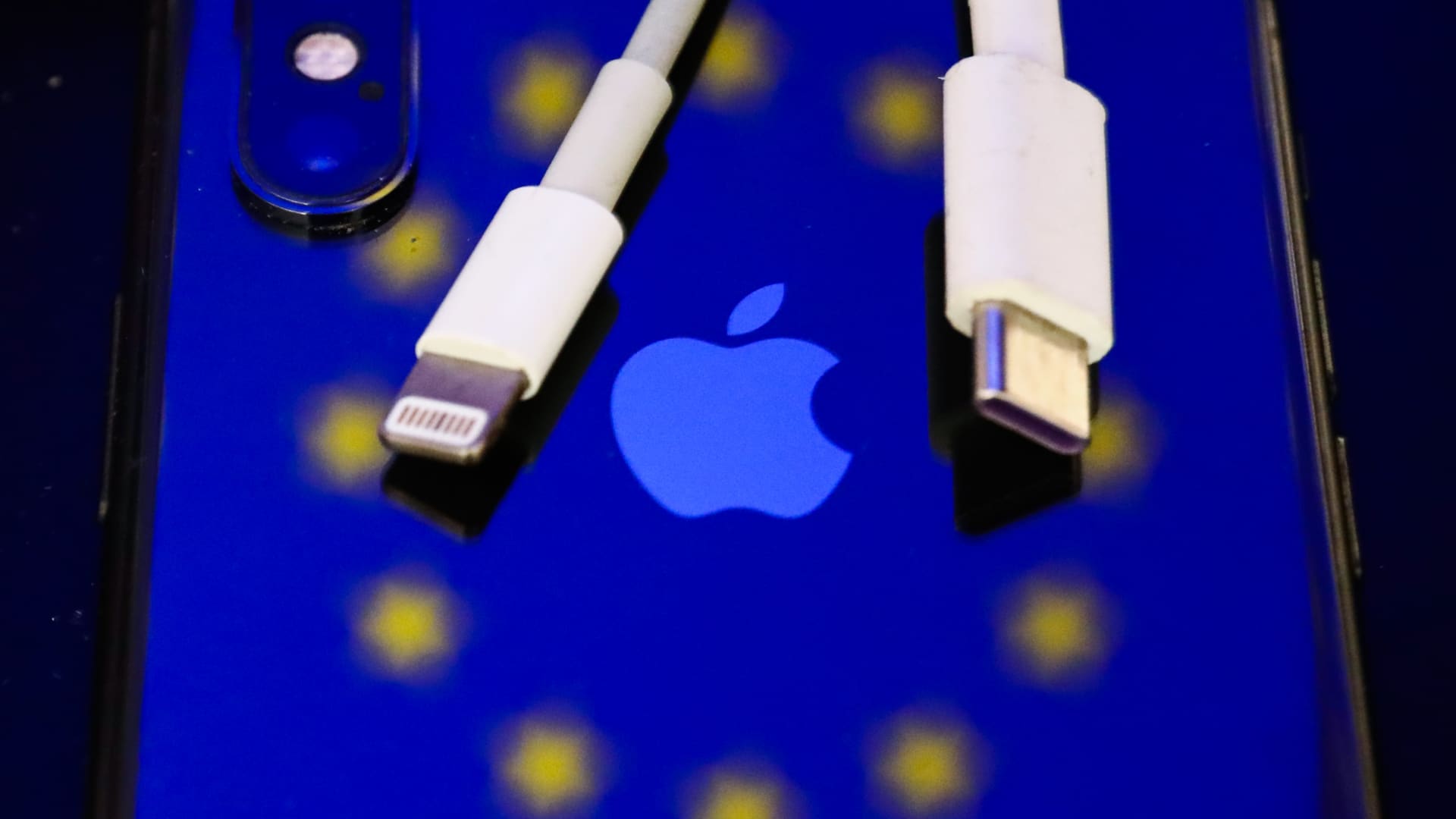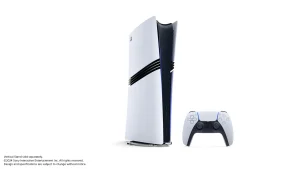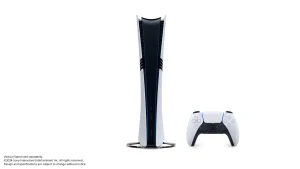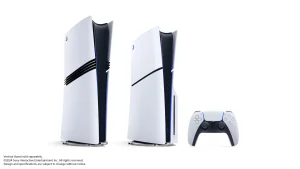Tech
The iPhone 15 could get one of the biggest upgrades in years: A new charging port

The next iPhones, expected in September as usual, could have a feature that no iPhone has ever had: a generic charging port.
The new iPhone models could include a USB Type-C charger port on the phone’s bottom, according to analysts and media reports. That’s the same charging port that’s used on nearly every laptop sold in the past few years, as well as Android phones, iPads, and other gadgets from Kindles to headphones to drones and heated blankets.
The USB-C connector would replace Apple’s proprietary port, the Lightning port, which has graced the bottom of every iPhone model released since 2012.
The shift would be one of the biggest improvements to the iPhone in years for consumers.
IPhone users would no longer need to bring two different cables for their phone and other gadgets while traveling. Android users could borrow chargers from people who own iPhones. IPhone users could borrow chargers from anyone using a newer laptop. Schools and businesses could standardize on one type of charger for their entire fleet of devices. USB-C could even allow iPhones to access faster charging speeds.
While Apple hasn’t confirmed that its new iPhones will feature a USB-C charging port, and didn’t respond to a request for comment, the change is bound to happen.
A new regulation passed by the European Union last year requires USB-C ports on new smartphones by 2024. Apple is unlikely to produce an iPhone model solely for the European market. “Obviously, we’ll have to comply,” Greg Joswiak, Apple’s chief marketer, said last year.
Consumer benefits, like the reduced “lock-in” to a single manufacturer, helped form the reasoning behind the new regulations. The EU estimates the rule could save Europeans 250 million euros per year on chargers. The EU also said old chargers account for about 11,000 tons of e-waste per year in the region.
Apple opposed the law. In a 2021 letter, Apple said that the regulation would hamper future charging innovation, could require it to take devices off the market early, and could confuse consumers with additional information.
“We are concerned that regulation mandating just one type of connector for all devices on the market will harm European consumers by slowing down the introduction of beneficial innovations in charging standards, including those related to safety and energy efficiency,” Apple said in the letter.
Whenever Apple changes the ports on its devices, skeptics believe it’s just an effort to make more money on its premium-priced cables. Apple’s most capable USB-C cable retails for $39.
For example, when Apple added USB-C chargers to MacBook laptops starting in 2015, it drew jokes about the dongles required to plug older accessories into the new laptops.
When Apple removed the headphone jack from the iPhone in 2016, it spurred months of commentary, both for and against the “courageous” change, about whether Apple was pushing people to its more expensive wireless AirPods. It still inspires takes today about whether it was the right decision; most Android phones have followed suit.
But while Apple makes money from its cables, and has a program where accessory makers pay for access and official Apple parts called “MFi,” Apple’s strategic focus is making sure that its products work together without major flaws so its users continue to buy new iPhones. It’s not nickel-and-diming dongles and accessories.
Cable sales are reported in Apple’s Wearables, Home, and Accessories product line, which reported $41 billion in revenue in 2022, although Apple Watches and headphones make up the majority of the sales. That’s much smaller than the $205 billion in iPhone sales Apple reported during the year.
Possible downsides
Apple’s argument that a new charger will cause confusion holds more water. With the Lightning port, companies that wanted to make officially approved accessories have to apply for Apple’s program, and pay for access to specifications and official Apple parts. For consumers, this meant that while there were a few knockoff Lightning devices to avoid, at most stores, the dock or clock or cable users purchased would just work.
USB-C is a different beast. It’s a “standard,” which means the exact specifications are published by a group of companies and individuals working together. Anyone can use those specifications to build cables, and you don’t need to enroll in an Apple-administered program.
This also means that many iPhone users will learn that not all cables with a USB-C connector are created equal. Some cables can transfer data quickly, and some can’t. Back when the standard was first introduced, some cables could even cause damage to devices because they were misconfigured, though this hasn’t been as common in recent years. Some cables even support “Thunderbolt,” a modern data transfer standard for powerful accessories such as monitors or docks, although at a higher price. There are websites that test and approve cables that are “compliant” with the USB-C standard.
Apple will likely let users know if a cable is appropriate for charging an iPhone, through software warnings, what it carries at its retail operation, and through its MFi program.
But it’s clear that the charger port switch raises possibilities for frustrating situations that didn’t exist when Apple stuck with its proprietary charger. Apple’s current troubleshooting document for USB-C charging issues on Mac tells users to test with Apple’s official cables and power adapters.
The world won’t change overnight when Apple’s iPhones have USB-C ports. Apple still develops some of its own proprietary charging standards, such as MagSafe, which uses magnets to affix a charging puck to the back of an iPhone. Its Apple Watch uses a unique magnetic charger as well. Even after using USB-C as the only charging port on its MacBook laptops for years, Apple recently introduced a proprietary magnetic charger on recent models.
Eventually, Apple watchers predict, the company is likely to try to remove ports entirely from the iPhone, but until then, Apple aficionados with multiple products will still need to carry several different charging cables.
Still, the USB-C port is a step in the right direction for iPhone users, even if Apple is grumbling along the way. Apple preferred an approach that would standardize charging bricks but allow cables to be specific for a type of device.
“What that allows you to do is have over a billion people — it’s not a small number of people have that connector on the left [pointing to the Lightning cable] — to be able to use what they have already, and not have to be disrupted,” Apple’s senior vice president of worldwide marketing, Greg Jozwiak, said in 2022.

Tech
How to Preorder the PlayStation 5 Pro in Canada

Sony has made it easy for Canadian consumers to preorder the PlayStation 5 Pro in Canada directly from PlayStation’s official website. Here’s how:
- Visit the Official Website: Go to direct.playstation.com and navigate to the PS5 Pro section once preorders go live on September 26, 2024.
- Create or Log in to Your PlayStation Account: If you don’t have a PlayStation account, you will need to create one. Existing users can simply log in to proceed.
- Place Your Preorder: Once logged in, follow the instructions to preorder your PS5 Pro. Ensure you have a valid payment method ready and double-check your shipping information for accuracy.
Preorder Through Major Canadian Retailers
While preordering directly from PlayStation is a popular option, you can also secure your PS5 Pro through trusted Canadian retailers. These retailers are expected to offer preorders on or after September 26:
- Best Buy Canada
- Walmart Canada
- EB Games (GameStop)
- Amazon Canada
- The Source
Steps to Preorder via Canadian Retailers:
- Visit Retailer Websites: Search for “PlayStation 5 Pro” on the website of your preferred retailer starting on September 26.
- Create or Log in to Your Account: If you’re shopping online, having an account with the retailer can speed up the preorder process.
- Preorder in Store: For those who prefer in-person shopping, check with local stores regarding availability and preorder policies.
3. Sign Up for Notifications
Many retailers and websites offer the option to sign up for notifications when the preorder goes live. If you’re worried about missing out due to high demand, this can be a useful option.
- Visit Retailer Sites: Look for a “Notify Me” or “Email Alerts” option and enter your email to stay informed.
- Use PlayStation Alerts: Sign up for notifications directly through Sony to be one of the first to know when preorders are available.
4. Prepare for High Demand
Preordering the PS5 Pro is expected to be competitive, with high demand likely to result in quick sellouts, just as with the initial release of the original PS5. To maximize your chances of securing a preorder:
- Act Quickly: Be prepared to place your order as soon as preorders open. Timing is key, as stock can run out within minutes.
- Double-Check Payment Information: Ensure your credit card or payment method is ready to go. Any delays during the checkout process could result in losing your spot.
- Stay Informed: Monitor PlayStation and retailer websites for updates on restocks or additional preorder windows.
Final Thoughts
The PlayStation 5 Pro is set to take gaming to the next level with its enhanced performance, graphics, and new features. Canadian gamers should be ready to act fast when preorders open on September 26, 2024, to secure their console ahead of the holiday season. Whether you choose to preorder through PlayStation’s official website or your preferred retailer, following the steps outlined above will help ensure a smooth and successful preorder experience.
For more details on the PS5 Pro and to preorder, visit direct.playstation.com or stay tuned to updates from major Canadian retailers.
Tech
Introducing the PlayStation 5 Pro: The Next Evolution in Gaming

Since the PlayStation 5 (PS5) launched four years ago, PlayStation has continuously evolved to meet the demands of its players. Today, we are excited to announce the next step in this journey: the PlayStation 5 Pro. Designed for the most dedicated players and game creators, the PS5 Pro brings groundbreaking advancements in gaming hardware, raising the bar for what’s possible.
Key Features of the PS5 Pro
The PS5 Pro comes equipped with several key performance enhancements, addressing the requests of gamers for smoother, higher-quality graphics at a consistent 60 frames per second (FPS). The console’s standout features include:
- Upgraded GPU: The PS5 Pro’s GPU boasts 67% more Compute Units than the current PS5, combined with 28% faster memory. This allows for up to 45% faster rendering speeds, ensuring a smoother gaming experience.
- Advanced Ray Tracing: Ray tracing capabilities have been significantly enhanced, with reflections and refractions of light being processed at double or triple the speed of the current PS5, creating more dynamic visuals.
- AI-Driven Upscaling: Introducing PlayStation Spectral Super Resolution, an AI-based upscaling technology that adds extraordinary detail to images, resulting in sharper image clarity.
- Backward Compatibility & Game Boost: More than 8,500 PS4 games playable on PS5 Pro will benefit from PS5 Pro Game Boost, stabilizing or enhancing performance. PS4 games will also see improved resolution on select titles.
- VRR & 8K Support: The PS5 Pro supports Variable Refresh Rate (VRR) and 8K gaming for the ultimate visual experience, while also launching with the latest wireless technology, Wi-Fi 7, in supported regions.
Optimized Games & Patches
Game creators have quickly embraced the new technology that comes with the PS5 Pro. Many games will receive free updates to take full advantage of the console’s new features, labeled as PS5 Pro Enhanced. Some of the highly anticipated titles include:
- Alan Wake 2
- Assassin’s Creed: Shadows
- Demon’s Souls
- Dragon’s Dogma 2
- Final Fantasy 7 Rebirth
- Gran Turismo 7
- Marvel’s Spider-Man 2
- Ratchet & Clank: Rift Apart
- Horizon Forbidden West
These updates will allow players to experience their favorite games at a higher fidelity, taking full advantage of the console’s improved graphics and performance.






Design & Compatibility
Maintaining consistency within the PS5 family, the PS5 Pro retains the same height and width as the original PS5 model. Players will also have the option to add an Ultra HD Blu-ray Disc Drive or swap console covers when available.
Additionally, the PS5 Pro is fully compatible with all existing PS5 accessories, including the PlayStation VR2, DualSense Edge, Pulse Elite, and Access controller. This ensures seamless integration into your current gaming setup.
Pricing & Availability
The PS5 Pro will be available starting November 7, 2024, at a manufacturer’s suggested retail price (MSRP) of:
- $699.99 USD
- $949.99 CAD
- £699.99 GBP
- €799.99 EUR
- ¥119,980 JPY
Each PS5 Pro comes with a 2TB SSD, a DualSense wireless controller, and a copy of Astro’s Playroom pre-installed. Pre-orders begin on September 26, 2024, and the console will be available at participating retailers and directly from PlayStation via direct.playstation.com.
The launch of the PS5 Pro marks a new chapter in PlayStation’s commitment to delivering cutting-edge gaming experiences. Whether players choose the standard PS5 or the PS5 Pro, PlayStation aims to provide the best possible gaming experience for everyone.
Preorder your PS5 Pro and step into the next generation of gaming this holiday season.
Tech
Google Unveils AI-Powered Pixel 9 Lineup Ahead of Apple’s iPhone 16 Release
Google has launched its next generation of Pixel phones, setting the stage for a head-to-head competition with Apple as both tech giants aim to integrate more advanced artificial intelligence (AI) features into their flagship devices. The unveiling took place near Google’s Mountain View headquarters, marking an early debut for the Pixel 9 lineup, which is designed to showcase the latest advancements in AI technology.
The Pixel 9 series, although a minor player in global smartphone sales, is a crucial platform for Google to demonstrate the cutting-edge capabilities of its Android operating system. With AI at the core of its strategy, Google is positioning the Pixel 9 phones as vessels for the transformative potential of AI, a trend that is expected to revolutionize the way people interact with technology.
Rick Osterloh, Google’s senior vice president overseeing the Pixel phones, emphasized the company’s commitment to AI, stating, “We are obsessed with the idea that AI can make life easier and more productive for people.” This echoes the narrative Apple is likely to push when it unveils its iPhone 16, which is also expected to feature advanced AI capabilities.
The Pixel 9 lineup will be the first to fully integrate Google’s Gemini AI technology, designed to enhance user experience through more natural, conversational interactions. The Gemini assistant, which features 10 different human-like voices, can perform a wide array of tasks, particularly if users allow access to their emails and documents.
In an on-stage demonstration, the Gemini assistant showcased its ability to generate creative ideas and even analyze images, although it did experience some hiccups when asked to identify a concert poster for singer Sabrina Carpenter.
To support these AI-driven features, Google has equipped the Pixel 9 with a special chip that enables many AI processes to be handled directly on the device. This not only improves performance but also enhances user privacy and security by reducing the need to send data to remote servers.
Google’s aggressive push into AI with the Pixel 9 comes as Apple prepares to unveil its iPhone 16, which is expected to feature its own AI advancements. However, Google’s decision to offer a one-year free subscription to its advanced Gemini Assistant, valued at $240, may pressure Apple to reconsider any plans to charge for its AI services.
The standard Pixel 9 will be priced at $800, a $100 increase from last year, while the Pixel 9 Pro will range between $1,000 and $1,100, depending on the model. Google also announced the next iteration of its foldable Pixel phone, priced at $1,800.
In addition to the new Pixel phones, Google also revealed updates to its Pixel Watch and wireless earbuds, directly challenging Apple’s dominance in the wearable tech market. These products, like the Pixel 9, are designed to integrate seamlessly with Google’s AI-driven ecosystem.
Google’s event took place against the backdrop of a significant legal challenge, with a judge recently ruling that its search engine constitutes an illegal monopoly. This ruling could lead to further court proceedings that may force Google to make significant changes to its business practices, potentially impacting its Android software or other key components of its $2 trillion empire.
Despite these legal hurdles, Google is pressing forward with its vision of an AI-powered future, using its latest devices to showcase what it believes will be the next big leap in technology. As the battle for AI supremacy heats up, consumers can expect both Google and Apple to push the boundaries of what their devices can do, making the choice between them more compelling than ever.
-

 News14 hours ago
News14 hours agoB.C. to scrap consumer carbon tax if federal government drops legal requirement: Eby
-

 News13 hours ago
News13 hours agoA linebacker at West Virginia State is fatally shot on the eve of a game against his old school
-

 Sports15 hours ago
Sports15 hours agoLawyer says Chinese doping case handled ‘reasonably’ but calls WADA’s lack of action “curious”
-

 Sports9 hours ago
Sports9 hours agoCanada’s Marina Stakusic advances to quarterfinals at Guadalajara Open
-

 News13 hours ago
News13 hours agoHall of Famer Joe Schmidt, who helped Detroit Lions win 2 NFL titles, dies at 92
-

 News15 hours ago
News15 hours agoRCMP say 3 dead, suspects at large in targeted attack at home in Lloydminster, Sask.
-
News23 hours ago
Local Toronto business story – Events Industry : new national brand, Element Event Solutions
-

 News15 hours ago
News15 hours agoProvinces decry Ottawa’s plan to resettle asylum seekers across the country



















